4 Key Financial Statements For Your Startup Business Plan

If you’re preparing a business plan for your startup, chances are that investors (or a bank) have also asked you to produce financial projections for your business. That’s absolutely normal: any startup business plan should at least include forecasts of the 3 financial statements.
The financial projections need to be presented clearly with charts and tables so potential investors understand where you are going, and how much money you need to get there.
In this article we explain you what are the 4 financial statements you should include in the business plan for your startup. Let’s dive in!
Financial Statement #1: Profit & Loss
The profit and loss (P&L), also referred to as “income statement”, is a summary of all your revenues and expenses over a given time period.
By subtracting expenses from revenues, it gives a clear picture of whether your business is profitable, or loss-making. With the balance sheet and the cash flow statement, it is one of the 3 consolidated financial statements every startup must produce every fiscal year.
Most small businesses produce a P&L on a yearly basis with the help of their accountant. Yet it is good practice to keep track of all revenues and expenses on a monthly or quarterly basis as part of your budget instead.
When projecting your financials as part of your business plan, you must do so on a monthly basis. Usually, most startups project 3 years hence 36 months. If you have some historical performance (for instance you started your business 2 years ago), project 5 years instead.
Your P&L projections will need to be as realistic as possible, read our article here on how to do it.
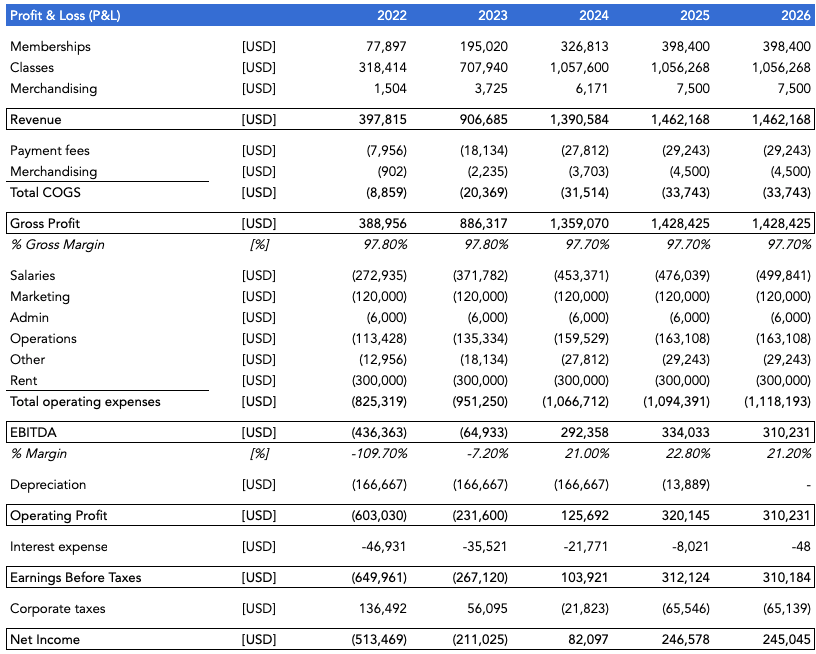
Financial Statement #2: Cash Flow
Whilst your P&L includes all your business’ revenues and expenses in a given period, the cash flow statement records all cash inflows and outflows over that same period.
Some expenses are not necessarily recorded in your P&L but should be included in your cash flow statement instead. Why is that? There are 2 main reasons:
- Your P&L shows a picture of all the revenues you generated over a given period as well as the expenses you incurred to generate these revenues. If you sell $100 worth of products in July 2021 and incurred $50 cost to source them from your supplier, your P&L shows $100 revenues minus $50 expenses for that month. But what about if you bought a $15,000 car to deliver these products to your customers? The $15,000 should not be recorded as an expense in your P&L, but a cash outflow instead. Indeed, the car will help you generate revenues, say over the next 5 years, not just in July 2021
We call expenses such as the car purchase "capital expenditures"
- Some expenses in your P&L are not necessarily cash outflows. Think depreciation and amortization expenses for instance: they are pure artificial expenses and aren’t really “spent”. As such, whilst your P&L might include a $100 depreciation expense, your cash flow remains the same.
Depreciation and Amortization expenses are used in accounting to reflect the "loss" in value of an asset. For instance, the $15,000 car you just bought, like any other asset, will depreciate over time. Assuming a 5 years depreciation schedule, your car would be deemed worthless in 5 years time.
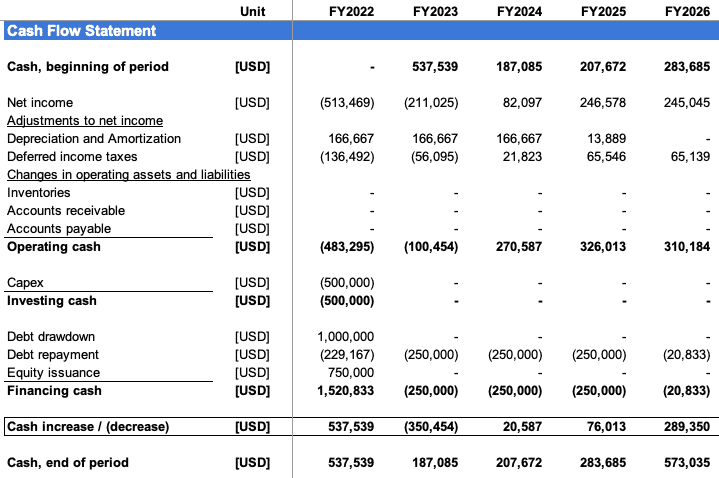
Financial Statement #3: Balance Sheet
Whilst the P&L and cash flow statement are a summary of your financial performance over a given time period, the balance sheet is a picture of your financials at a given time.
The balance sheet lists all your business’ assets and liabilities at a given time (at end of year for instance). As such, it includes things such as:
- Assets: patents, buildings, equipments, customer receivables, tax credits etc. Assets can be either tangible (e.g. buildings) or intangible (e.g. customer receivables).
- Liabilities: debt, suppliers payables, etc.
- Equity: the paid-in capital invested to date in the company (from you and any other potential investors). Equity also includes the cumulative result of your P&L: the sum of your profits and losses to date
Whilst P&L and cash flow statement are fairly simple to build when preparing your business plan, you might need help for your balance sheet.
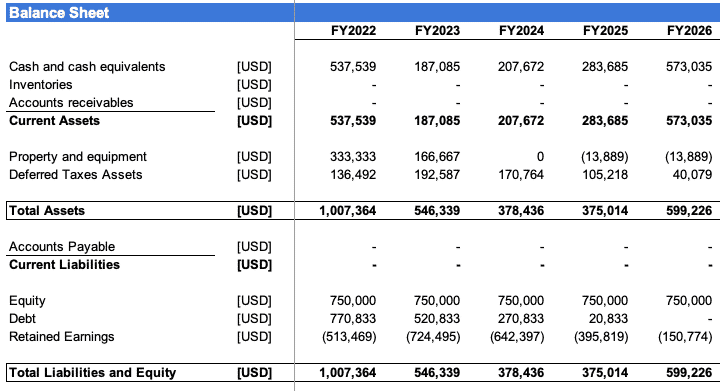
Financial Statement #4: Use of Funds
The use of funds is not a mandatory financial statement your accountant will need to prepare every year. Instead, you shall include it in your startup business plan, along with the 3 key financial statements.
Indeed, the use of funds tells investors where you will spend your money over a given time frame. For instance, if you are raising $500k to open a retail shop, you might need $250k for the first year lease and another $250k for the inventory.
Use of funds should not be an invention from you: instead it is the direct result of your cash flow statement. If you are raising for your first year of business, and your projected cash flow statement result in a $500k loss (including all revenues and expenses), you will need to raise $500k.
For instance, using the example above, if you need $500k over the next 12 months, raise $600k or so instead. Indeed, better be on the safe side in case things do not go as expected!
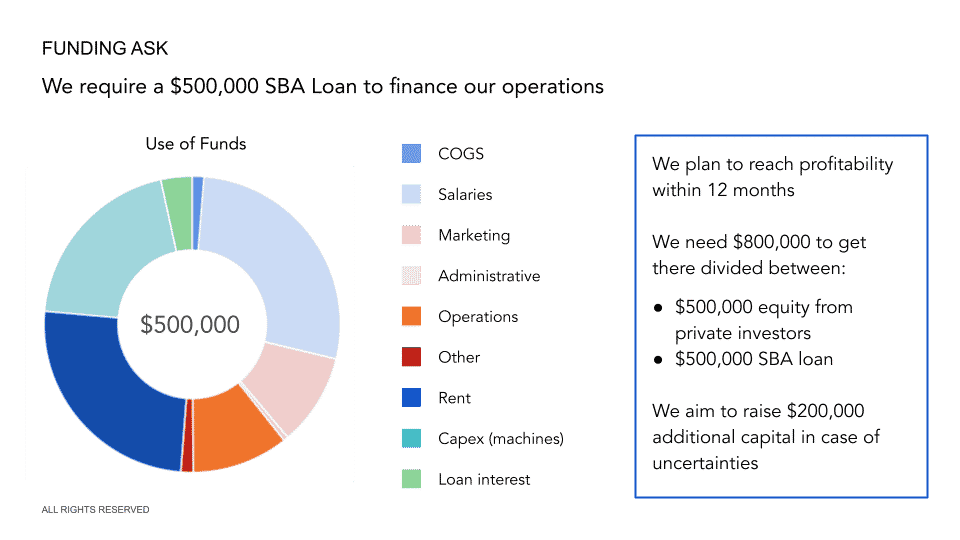

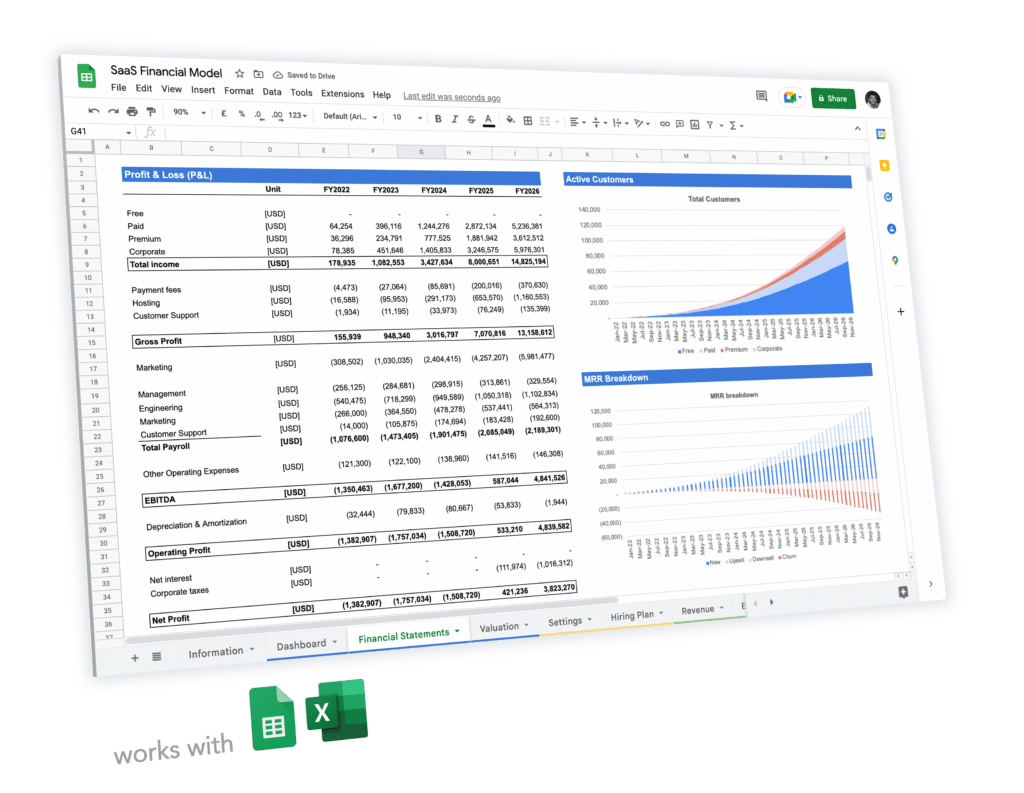
 5-year pro forma financial model
5-year pro forma financial model 20+ charts and business valuation
20+ charts and business valuation  Free support
Free support